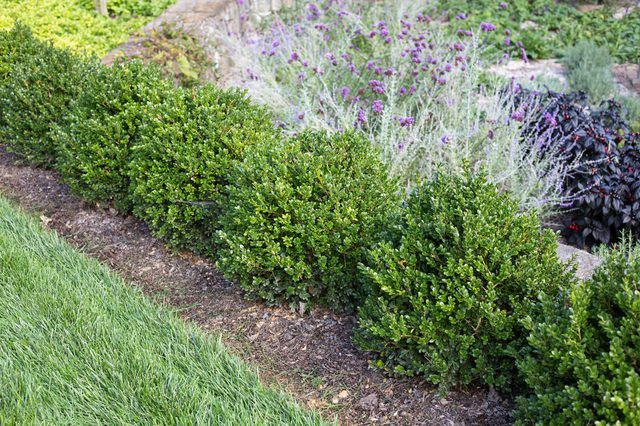Bulbs
Flower Basics
Flower Beds & Specialty Gardens
Flower Garden
Garden Furniture
Garden Gnomes
Garden Seeds
Garden Sheds
Garden Statues
Garden Tools & Supplies
Gardening Basics
Green & Organic
Groundcovers & Vines
Growing Annuals
Growing Basil
Growing Beans
Growing Berries
Growing Blueberries
Growing Cactus
Growing Corn
Growing Cotton
Growing Edibles
Growing Flowers
Growing Garlic
Growing Grapes
Growing Grass
Growing Herbs
Growing Jasmine
Growing Mint
Growing Mushrooms
Orchids
Growing Peanuts
Growing Perennials
Growing Plants
Growing Rosemary
Growing Roses
Growing Strawberries
Growing Sunflowers
Growing Thyme
Growing Tomatoes
Growing Tulips
Growing Vegetables
Herb Basics
Herb Garden
Indoor Growing
Landscaping Basics
Landscaping Patios
Landscaping Plants
Landscaping Shrubs
Landscaping Trees
Landscaping Walks & Pathways
Lawn Basics
Lawn Maintenance
Lawn Mowers
Lawn Ornaments
Lawn Planting
Lawn Tools
Outdoor Growing
Overall Landscape Planning
Pests, Weeds & Problems
Plant Basics
Rock Garden
Rose Garden
Shrubs
Soil
Specialty Gardens
Trees
Vegetable Garden
Yard Maintenance
Types of Boxwood Plants
Types of Boxwood Plants. Not every shrub was meant to be Prince Hamlet. To borrow from poet T.S. Eliot, boxwood (Buxus spp.) is more an attendant lord, a broadleaf evergreen shrub gardeners use for structure and texture instead of star power. Boxwood plants are deer-resistant, drought-tolerant and accept pruning without complaint, making these...
Not every shrub was meant to be Prince Hamlet. To borrow from poet T.S. Eliot, boxwood (Buxus spp.) is more an attendant lord, a broadleaf evergreen shrub gardeners use for structure and texture instead of star power. Boxwood plants are deer-resistant, drought-tolerant and accept pruning without complaint, making these green gems garden workhorses. Select a boxwood cultivar according to its growth pattern to ensure that it works well in your garden plan.
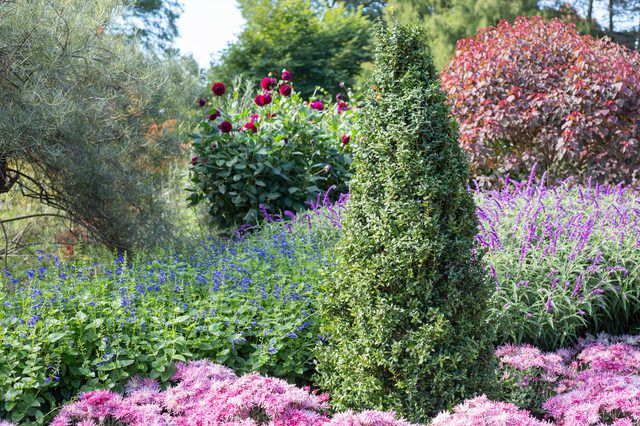
Although boxwood don't offer showy flowers or crimson autumn leaves, a big shrub makes an imposing block of lacy green foliage. If you need a boxwood to stand alone, look to common boxwood (Buxus sempervirens) with its classic, upright shape and dense, shiny, dark-green leaves. The cultivar "Arborescens" grows to 20 or more feet and can spread to 15 feet wide as it matures; it is hardy in U.S. Department of Agriculture plant hardiness zones 5 through 8. Planted in well-drained soil, common boxwood can stand guard over your garden for 75 to 150 years.
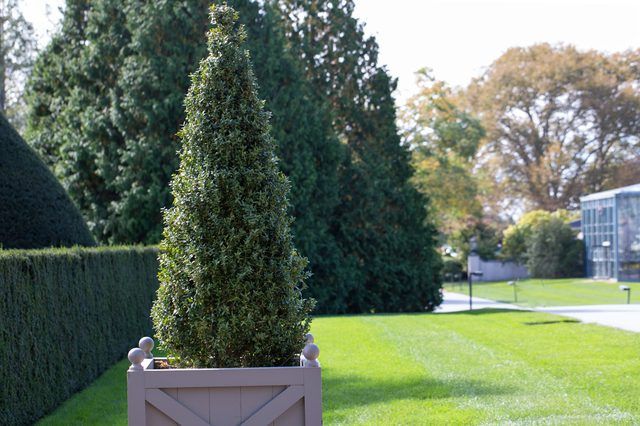
Boxwood can't compete with popular we-need-a-hedge-yesterday favorites in terms of fast growth, but a hedgerow of the small-leafed, conical evergreens can add an elegance and a sense of permanence to property. Columnar boxwood also work well in an avenue, a procession of tall trees lining a road or walkway. "Fastigiata" (Buxus sempervirens "Fastigiata"), with its tiny, dense, blue-tinged leaves, is an option for hedges and avenues. It naturally grows into a thick pillar, topping out at 12 feet high and 5 feet wide. For an equally tall but slightly narrower plant, choose "Dee Runk" (Buxus sempervirens "Dee Runk"), which spreads to 3 feet. Both cultivars are hardy in USDA zones 6 through 8.
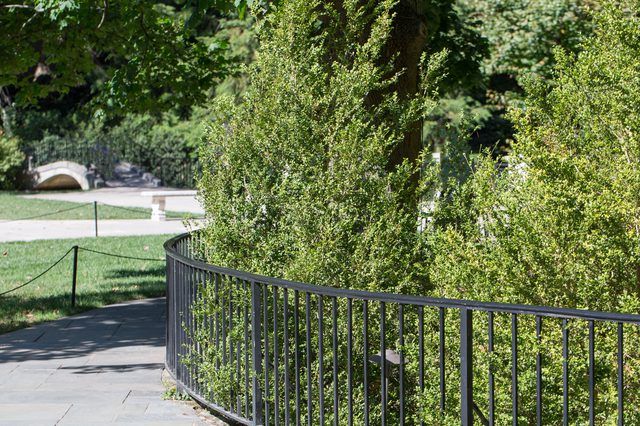
When you want to make your entrance elegant or smooth the transition from lawn to house, consider boxwood as foundation plants to soften edges and boundaries. Shrubs that grow in the shape of teardrops or soft pyramids are naturals for this role, and they include little-leaf boxwood "John Baldwin" (Buxus microphylla "John Baldwin," USDA zones 6 through 8). With fine-textured foliage and tiny leaves, it matures to 6 feet tall with a lower spread of 3 to 4 feet and a gently pointed crown. For colder climates, select "Green Mountain" (Buxus x "Green Mountain," USDA zones 4 through 8).
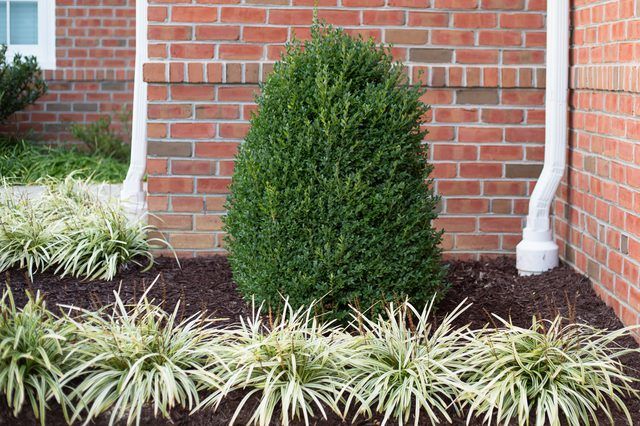
Boxwood spheres are immensely popular, the poster children of the genus. The globe-shaped shrubs work well as foundation plants and line up neatly in small or medium hedges, depending on the cultivar's mature height. "Wintergreen" (Buxus microphylla var. japonica "Wintergreen," USDA zones 6 through 8), for example, grows 2 to 4 inches per year -- faster than the average boxwood -- until it matures into a ball some 5 feet in each direction. Like most boxwood, it readily accepts pruning.
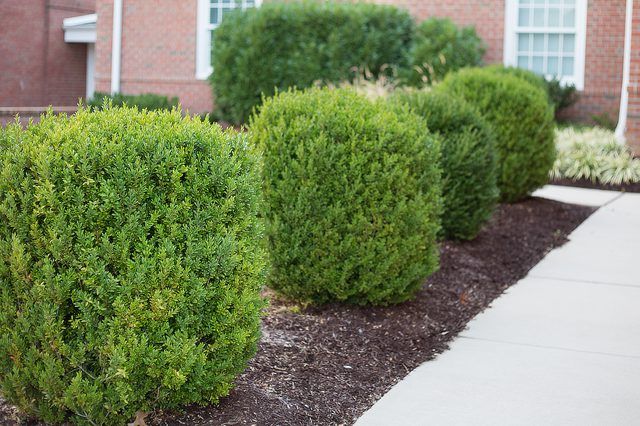
An edging is like a ribbon of foliage crossing a lawn or garden. Any boxwood cultivar can be clipped tightly, but it's wise to select dwarf shrubs to avoid constant pruning. "Morris Midget" (Buxus microphylla var. japonica "Morris Midget," USDA zones 6 through 8) never gets much taller than 1 foot, produces dense foliage and grows 1 inch or less each year. Those traits make it perfect for edging or parterre in formal gardens, where boxwood are planted in symmetrical patterns and kept short and neat by clipping.
